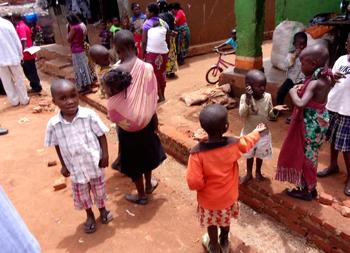
LILONGWE, Malawi, January 9, 2018 (ENS) – The half million residents of Malawi’s capital city, Lilongwe, are smiling in anticipation of improved water services and safely managed sanitation through a new US$100 million project financed by the World Bank.
Many areas in the capital of this southeast African country are not now served by piped water, and only five percent of the population is served by a sewer system, while most residents rely on on-site sanitation systems such as pit latrines and septic tanks.
But improvements are in the pipeline. The World Bank last month approved financing for the six-year Lilongwe Water and Sanitation Project.
Two thirds of the project funds will help rehabilitate and expand Lilongwe’s water distribution network. This will include construction of 27 kilometers of transmission mains and associated pumping stations and storage reservoirs. It will also upgrade 142 km of existing distribution network and expand the distribution network by about 186 km.

“Lilongwe City faces considerable water security challenges that must be addressed urgently to serve the growing population and enhance economic activities in the capital,” said Greg Toulmin, World Bank Country Manager for Malawi.
Lilongwe’s water demand is forecast to reach almost three times the current supply by 2035.
“The supply system is already under strain,” said Toulmin. “However, through this project the World Bank will ease that pressure through priority investments in water distribution network rehabilitation, as well as sanitation improvements to keep up with city requirements.”
“We are determined to provide our Lilongwe city customers with more efficient services first by fixing the distribution network through this project,” said Alfonso Chikuni, CEO of the Lilongwe Water Board, which will implement the project jointly with the Lilongwe City Council.
Chikuni is hopeful that the new project will indeed fix the city’s long dysfunctional water system. “This project will help improve the systems hydraulic capacity and reduce losses by 10 percentage points,” he said.
While improving the distribution network, the water board also is increasing the capacity of Kamuzu Dam I by raising the 50-year-old dam on the Lilongwe River by five meters to address increasing demand for water.

All these water investments are under the broader Lilongwe Water Program, which runs till 2021.
The sanitation improvements are expected to take about one-fifth of the Lilongwe Water and Sanitation Project funds.
“We have not invested in the city’s ailing sanitation system for a long time. This project is therefore a good starting point to fix the city’s sanitation system,” said Charles Makanga, acting chief executive officer for the Lilongwe City Council.
The project will rehabilitate and expand the sewerage network (107 km) and the Kauma sewage treatment plant. Five thousand new sewer connections will be installed to benefit about 90,000 people.
There will be further support to construct 8,000 improved sanitation facilities, benefitting about 160,000 people from poor and vulnerable households. Sanitation improvements will also cover some markets and schools.
The project is intended to build Lilongwe Water Board’s capacity to manage its investment program, with support from the International Finance Corporation – the private sector arm of the World Bank Group.
The Lilongwe Water Board says it will also explore options for public-private partnership for water production expansion investments.
The funding for the Lilongwe Water and Sanitation Project includes a $75 million credit and a $25 million grant from the World Bank’s International Development Association, IDA.
Established in 1960, IDA helps the world’s 75 poorest countries, 39 of them in Africa, by providing grants and low to zero-interest loans for projects that boost economic growth and reduce poverty.
Copyright Environment News Service (ENS) 2018. All rights reserved.
